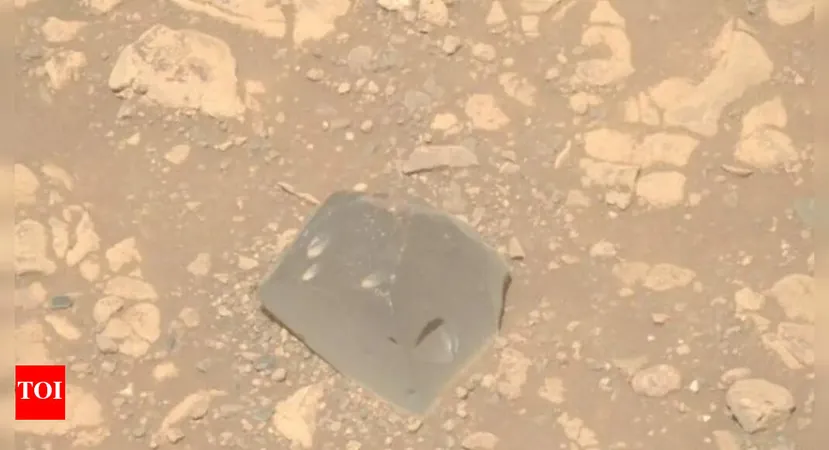
Astronomers Unveil Wild Weather on Distant Planet 900 Light-Years Away!
2025-04-12
Author: Noah
Groundbreaking Discoveries in Exoplanet Weather Patterns
Our journey into the cosmos has unveiled not just our own planet's climatic marvels, but now, we’re stretching that understanding beyond our solar system! Scientists have made a thrilling breakthrough by mapping the chaotic weather systems of an exoplanet known as WASP-121b, or Tylos, located a staggering 900 light-years away in the Puppis constellation.
Peering Through the Lens of a Giant Telescope
Utilizing the European Southern Observatory’s Very Large Telescope (VLT), researchers conducted an in-depth study of Tylos, employing an innovative instrument named ESPRESSO. This powerful tool allowed them to consolidate signals from multiple telescopic units, revealing more light on the distant planet than ever before.
Revealing the Planet's Mysterious Climate
The scientists tracked Tylos over its complete orbit around its host star, gathering crucial data that illuminated the chemical makeup of its atmosphere. This breakthrough enables us to map weather conditions in a way previously thought impossible.
Shocking Findings: A Climate Like No Other!
What they discovered is nothing short of astonishing! Tylos boasts extraordinary winds that transport materials like iron and titanium, leading to unpredictable weather phenomena. With one side of the planet scorched in relentless heat and the other comparatively cooler, a chaotic wind system emerges. According to researcher Julia Victoria Seidel, the jet streams swirling around Tylos are “far more aggressive” than anything seen on Earth.
A Climate Challenge to Our Understanding
The dual nature of Tylos's jet streams produces a unique climate behavior: one powerful equatorial jet stream rotates material around the planet, while a lower-level flow drags gas from the blistering hot side to the cooler side. This astonishing dynamic defies conventional meteorological understanding, suggesting that even the most powerful hurricanes on Earth look tame in comparison!
Cosmic Insights for Our Own Planet
Although Tylos isn’t thought to host any life, the insights we gain from studying its atmospheric conditions are invaluable. These revelations not only enhance our understanding of extraterrestrial climates but also feed back into how we view Earth’s weather.
A Glimpse into the Sci-Fi Future of Planetary Science
As Seidel aptly put it, "This planet’s atmosphere behaves in ways that challenge our understanding of how weather works — not just on Earth, but on all planets. It feels like something out of science fiction.” With continued advancements in telescopic technology and observation techniques, we inch closer to a comprehensive understanding of life and weather both within our solar system and across the vast universe.









 Brasil (PT)
Brasil (PT)
 Canada (EN)
Canada (EN)
 Chile (ES)
Chile (ES)
 Česko (CS)
Česko (CS)
 대한민국 (KO)
대한민국 (KO)
 España (ES)
España (ES)
 France (FR)
France (FR)
 Hong Kong (EN)
Hong Kong (EN)
 Italia (IT)
Italia (IT)
 日本 (JA)
日本 (JA)
 Magyarország (HU)
Magyarország (HU)
 Norge (NO)
Norge (NO)
 Polska (PL)
Polska (PL)
 Schweiz (DE)
Schweiz (DE)
 Singapore (EN)
Singapore (EN)
 Sverige (SV)
Sverige (SV)
 Suomi (FI)
Suomi (FI)
 Türkiye (TR)
Türkiye (TR)
 الإمارات العربية المتحدة (AR)
الإمارات العربية المتحدة (AR)